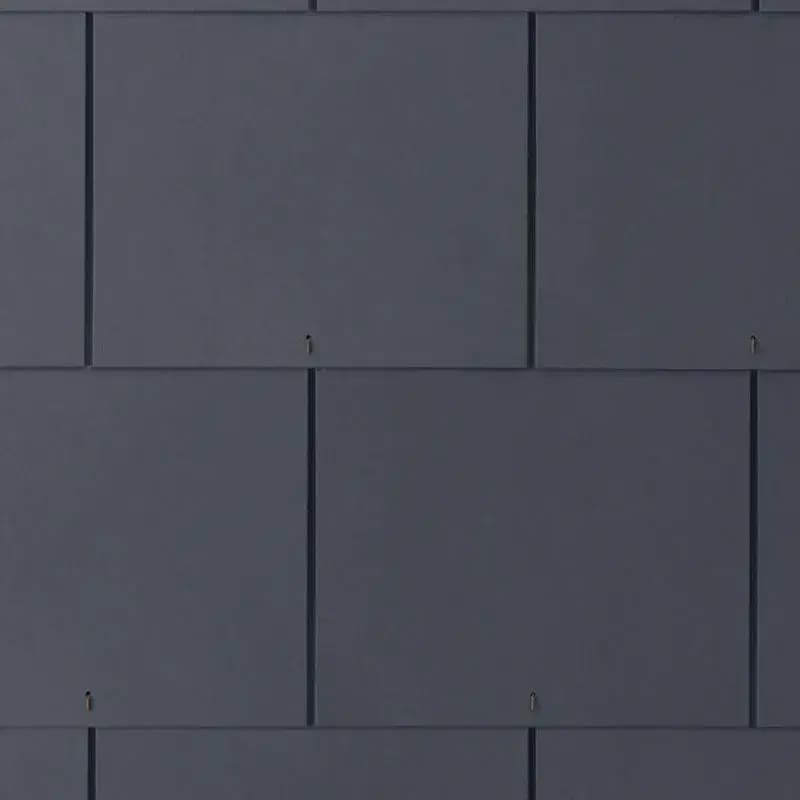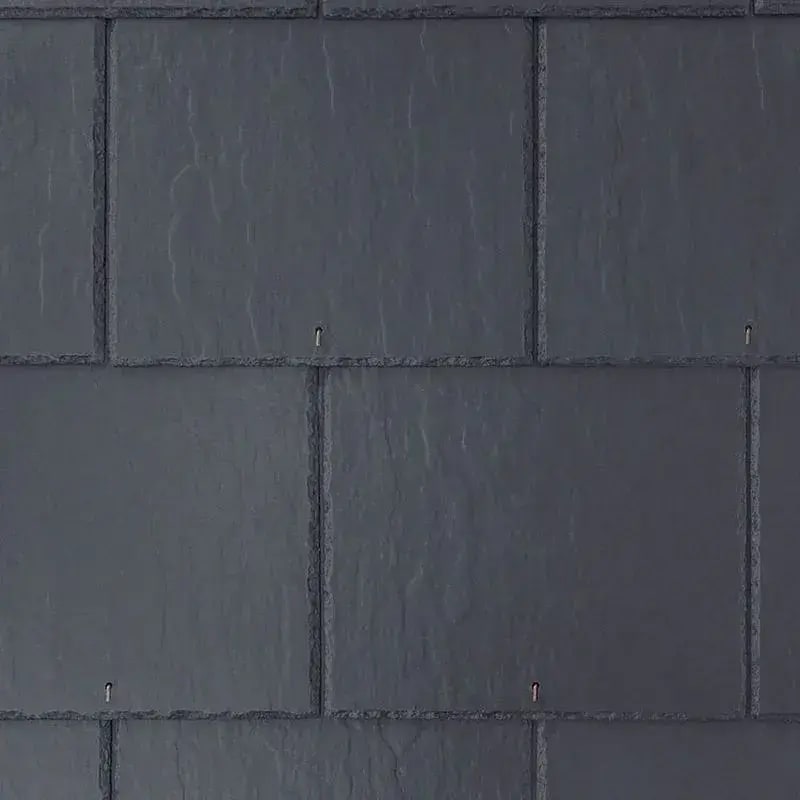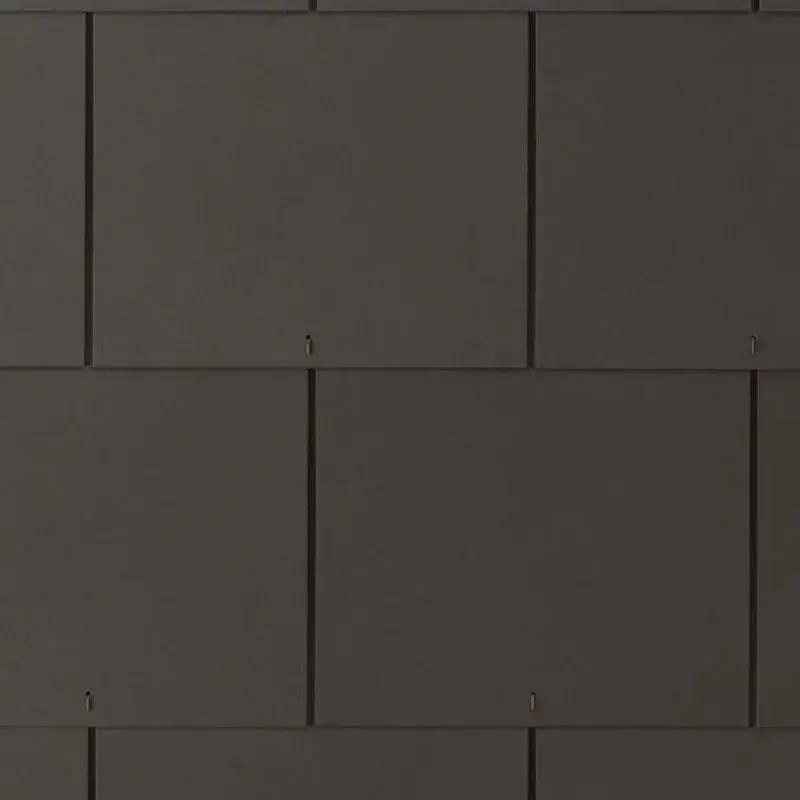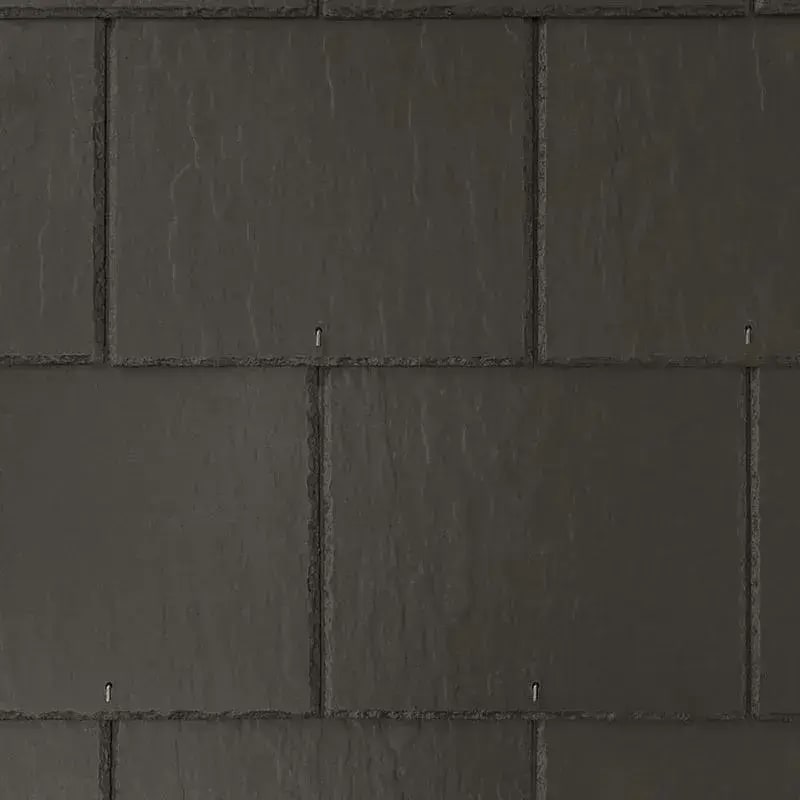Fibre Cement Slates
(10 Products)Fibre cement slates provide a durable, dimensionally stable, and low-maintenance roofing solution designed to replicate the appearance of natural slate. Manufactured from a composite of cement, cellulose fibres, and mineral fillers, they offer consistent performance, reduced weight, and reliable weather resistance for both new-build and refurbishment roofing applications.
Understanding Fibre Cement Slates
Fibre cement slates are engineered roofing products combining Portland cement, selected mineral fillers, and organic fibres to form dense, weatherproof sheets that emulate traditional slate. This composition delivers a strong yet lightweight material with uniform dimensions and high resistance to moisture absorption, frost, and UV exposure.
The slates are typically finished with an acrylic surface coating for enhanced colour stability and durability against environmental wear.
Used extensively across residential, commercial, and institutional buildings, fibre cement slates offer an efficient alternative to natural stone. Their predictable sizing reduces installation time, while factory pre-drilling facilitates accurate fixing alignment. They are particularly suited to areas where consistent appearance and cost control are essential, and where roof structures require reduced dead load.
Fibre cement slates comply with stringent European standards for roofing durability, wind uplift, and impermeability, making them a proven specification for pitched roofs in temperate and coastal environments. Their inert composition also contributes to fire safety, with classifications commonly achieving low spread of flame ratings suitable for diverse building types.
When correctly installed with compatible fixings, underlays, and ventilation components, fibre cement slates form part of an integrated weatherproof roofing envelope, supporting efficient rainwater management and long-term service life.
Material Range
- Standard Fibre Cement Slates: Flat, double-lapped sheets with smooth or textured finishes for traditional and contemporary pitched roofs.
- Textured Fibre Cement Slates: Surface-embossed variants replicating the grain and cleft of natural slate for aesthetic continuity in heritage or conservation settings.
- Coloured Fibre Cement Slates: Pigmented through or coated in pre-finished acrylic layers to match regional colour preferences and weathering characteristics.
- Lightweight Slates: Reduced thickness formats designed for structures with lower load capacities or where ease of handling is a priority.
Key Features
- Durability: Resistant to frost, rainwater ingress, and UV degradation for extended roof life.
- Dimensional Accuracy: Manufactured to tight tolerances ensuring consistent joint alignment and reduced wastage.
- Fire Performance: Classified as non-combustible with low flame spread under BS EN 13501-1.
- Low Maintenance: Inert surface composition prevents moss and fungal growth, reducing maintenance requirements.
- Lightweight Construction: Lower self-weight than natural slate supports simplified substructure design.
- Environmental Stability: Resistant to temperature and humidity fluctuations with minimal expansion or contraction.
- Ease of Installation: Pre-drilled fixing holes allow efficient, secure fixing with standard nails or hooks.
Typical Applications
- Residential Roofing: Applied on new-build housing, re-roofing, and extensions requiring slate appearance with reduced structural load.
- Commercial and Institutional Buildings: Used for schools, healthcare, and civic projects demanding long-term, low-maintenance weather protection.
- Heritage Projects: Appropriate for conservation areas where natural slate substitution is required without compromising visual uniformity.
- Modular and Lightweight Construction: Ideal for prefabricated systems or lightweight timber frame buildings requiring controlled roof loading.
Specification & Standards
- BS EN 492: Specifies fibre cement slates and fittings - product specification and test methods.
- BS 5534: Provides code of practice for slating and tiling, including installation methods and fixings.
- BS EN 13501-1: Defines fire classification of construction products and building elements.
- BS EN 14783: Covers metal and non-metallic sheet roofing installation principles relevant to fibre cement applications.
Related Materials and Construction Uses
Fibre cement slates are commonly integrated with ridge and verge fittings, breathable roofing underlays, and galvanised or stainless steel fixings.
They are compatible with timber or metal roof structures and can be coordinated with roof ventilation systems, insulation layers, and rainwater goods. Their use complements other cement-based façade products and lightweight cladding systems, maintaining material continuity and performance consistency across the building envelope.
Frequently Asked Fibre Cement Slates Questions
How Do Fibre Cement Slates Differ From Natural Slate?
Fibre cement slates are lighter, more uniform in size, and easier to install than natural slate. They do not split or delaminate and provide predictable fixing and performance characteristics, making them suitable for large-scale roofing projects.
What Standards Govern Fibre Cement Slates?
Fibre cement slates are manufactured and tested in accordance with BS EN 492, which specifies performance requirements for fibre-cement slates and fittings used for roofing and external cladding.
Are Fibre Cement Slates Suitable For All Roof Pitches?
Most fibre cement slates can be installed on roof pitches as low as 20°, depending on the slate type, size, and fixing method. Always refer to the manufacturer’s technical data sheet for minimum pitch requirements.
How Are Fibre Cement Slates Fixed To The Roof?
Fibre cement slates are typically fixed with copper, aluminium, or stainless steel nails or screws and sometimes require additional clips for enhanced wind resistance. Fixing specifications should comply with BS 5534: Code of Practice for Slating and Tiling.
What Is The Expected Lifespan Of Fibre Cement Slates?
When correctly installed and maintained, fibre cement slates have an expected service life of 50 years or more, depending on environmental exposure and adherence to manufacturer installation guidelines.
Are Fibre Cement Slates Suitable For Coastal Or Industrial Environments?
Yes. Fibre cement slates are non-corrosive and resistant to salt and chemical exposure, making them suitable for coastal and industrial locations. Proper fixings and underlay should be used to match environmental conditions.
Do Fibre Cement Slates Require Maintenance?
Fibre cement slates require minimal maintenance. Periodic inspection for moss growth, debris accumulation, and secure fixings is recommended to maintain performance and appearance.
Can Fibre Cement Slates Be Used For Wall Cladding?
Yes. Many fibre cement slates are suitable for vertical cladding applications, providing a uniform façade finish that is weather-resistant and low-maintenance. Fixing methods must follow BS 8612 for dry-fix roofing and cladding products.
Are Fibre Cement Slates Environmentally Sustainable?
Fibre cement slates contain no asbestos and are manufactured using energy-efficient processes. They are recyclable and contribute to sustainable building design by providing long service life and low maintenance requirements.





